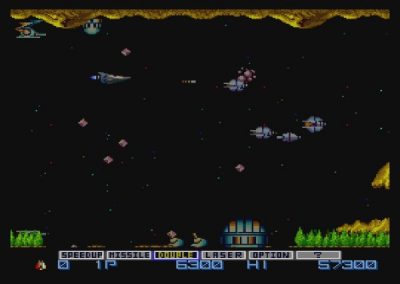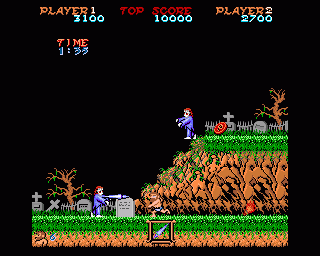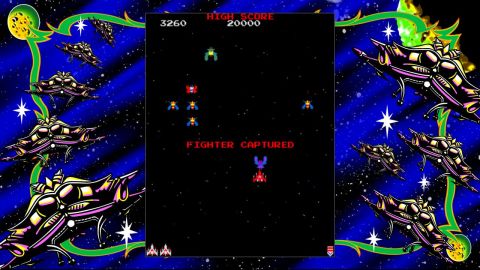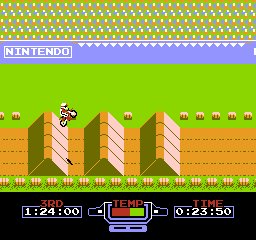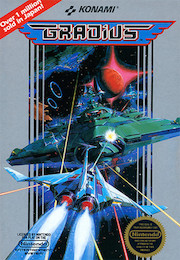
by damianlopez | gen. 23, 2020
One of the defining characteristics of the Gradius series is the use of a “power meter.” The power meter is powered by a power-up item, whose purpose, when collected, is to move a highlight to the next power-up on the power meter. When a power-up that the player wants becomes highlighted, he or she may activate it, also causing the highlight to reset.
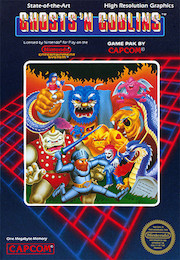
by damianlopez | gen. 23, 2020
Ghosts ‘n Goblins is a platform game where the player controls a knight, named Sir Arthur, who must defeat zombies, ogres, demons, cyclops, dragons and other monsters in order to rescue Princess Prin Prin, who has been kidnapped by Satan, king of Demon World. Along the way the player can pick up new weapons, bonuses and extra suits of armor that can help in this task. The game is often considered very difficult by arcade standards and is commonly regarded as one of the most difficult games ever released. The game is considered by Gametrailers.com to be the world’s second most difficult game ever made. The player can only be hit twice before losing a life (the first hit takes away Arthur’s armor, and the player must continue on in his underwear until completing the level, or finding replacement armor). If the player loses a life, he is returned to the start of the level, or the halfway point if he has managed to get that far. Furthermore, each life can only last a certain length of time (generally around three minutes), the clock being reset at the start of a level. If the clock does run out, the player instantly loses that life. After defeating the final boss, but only with the cross weapon (if the player does not have the cross weapon, they will be prompted that it is needed to defeat the boss and restart at the beginning of level 5 and must repeat round 5 and 6 again regardless if the weapon is obtained immediately or not) for the first time the player is informed that the battle was “a trap devised by Satan”. The player must then replay the entire game on a higher difficulty level to reach the genuine final battle.
Gènere
Platforms, Shooter
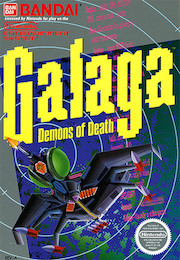
by damianlopez | gen. 23, 2020
The objective of Galaga is to score as many points as possible by destroying insect-like enemies. The player controls a starfighter that can move left and right along the bottom of the playfield. Enemies swarm in groups in a formation near the top of the screen, and then begin flying down toward the player, firing bombs at the fighter. The game ends when the player’s last fighter is lost, either by colliding with an enemy or one of its bullets, or by being captured. Galaga introduces a number of new features over its predecessor, Galaxian. Among these is the ability to fire more than one bullet at a time, a count of the player’s “hit/miss ratio” at the end of the game, and a bonus “Challenging Stage” that occurs every few levels, in which a series of enemies fly onto and out of the screen in set patterns without firing at the player’s ship or trying to crash into it. These stages award a large point bonus if the player manages to destroy every enemy. Another gameplay feature new to Galaga is the ability for enemies to capture the player’s fighter. While the player is in control of just one fighter, a “boss Galaga” (which takes two shots to kill) periodically attempts to capture the fighter using a tractor beam. If successful, the fighter joins the enemy formation. If the player has more lives remaining, play resumes with a new fighter. The captured fighter flies down with the enemy that captured it, firing upon the player just like normal enemies, and can be shot and destroyed. The player can free the fighter by destroying the boss Galaga while in flight, causing the captured fighter to link up with the player’s current fighter, doubling his or her firepower but also making a target twice as large. Galaga has an exploitable bug that can cause the attackers to stop firing bullets at the player, due to a coding error. In addition, similar to the famous “Split-Screen bug” in Pac-Man, a bug exists in Galaga in which the game “rolls over” from Level 255 to Level 0. Depending on the difficulty setting of the machine, this can cause the game to stall, requiring that the machine be reset or power-cycled in order to start a new game.
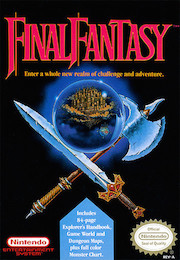
by damianlopez | gen. 23, 2020
Final Fantasy takes place in a fantasy world with three large continents. The elemental powers of this world are determined by the state of four crystals, each governing one of the four classical elements: earth, fire, water, and wind. The world of Final Fantasy is inhabited by numerous races, including humans, elves, dwarves, mermaids, dragons, and robots. Most non-human races have only one “town” in the game, although individuals are sometimes found in human towns or other areas as well. Four hundred years prior to the start of the game, the Lefeinish people, who used the Power of Wind to craft airships and a giant space station (called the Floating Castle in the game), watched their country decline as the Wind crystal went dark. Two hundred years later, violent storms sank a massive shrine that served as the center of an ocean-based civilization, and the Water crystal went dark. The Earth crystal and the Fire crystal followed, plaguing the earth with raging wildfires, and devastating the agricultural town of Melmond as the plains and vegetation decayed. Some time later, the sage Lukahn tells of a prophecy that four Light Warriors will come to save the world in a time of darkness.
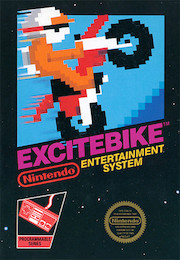
by damianlopez | gen. 23, 2020
Excitebike (エキサイトバイク Ekisaitobaiku) is a motocross racing video game franchise made by Nintendo. It first debuted as a game for the Famicom in Japan in 1984 and as a launch title for the NES in 1985. It is the first game of the Excite series, succeeded by its direct sequel Excitebike 64, its spiritual successors Excite Truck and Excitebots: Trick Racing, and the WiiWare title Excitebike: World Rally. 3D Classics: Excitebike, a 3D remake of the original game, was free for a limited time to promote the launch of the Nintendo eShop in June 2011, and has since been available for $5.99.



